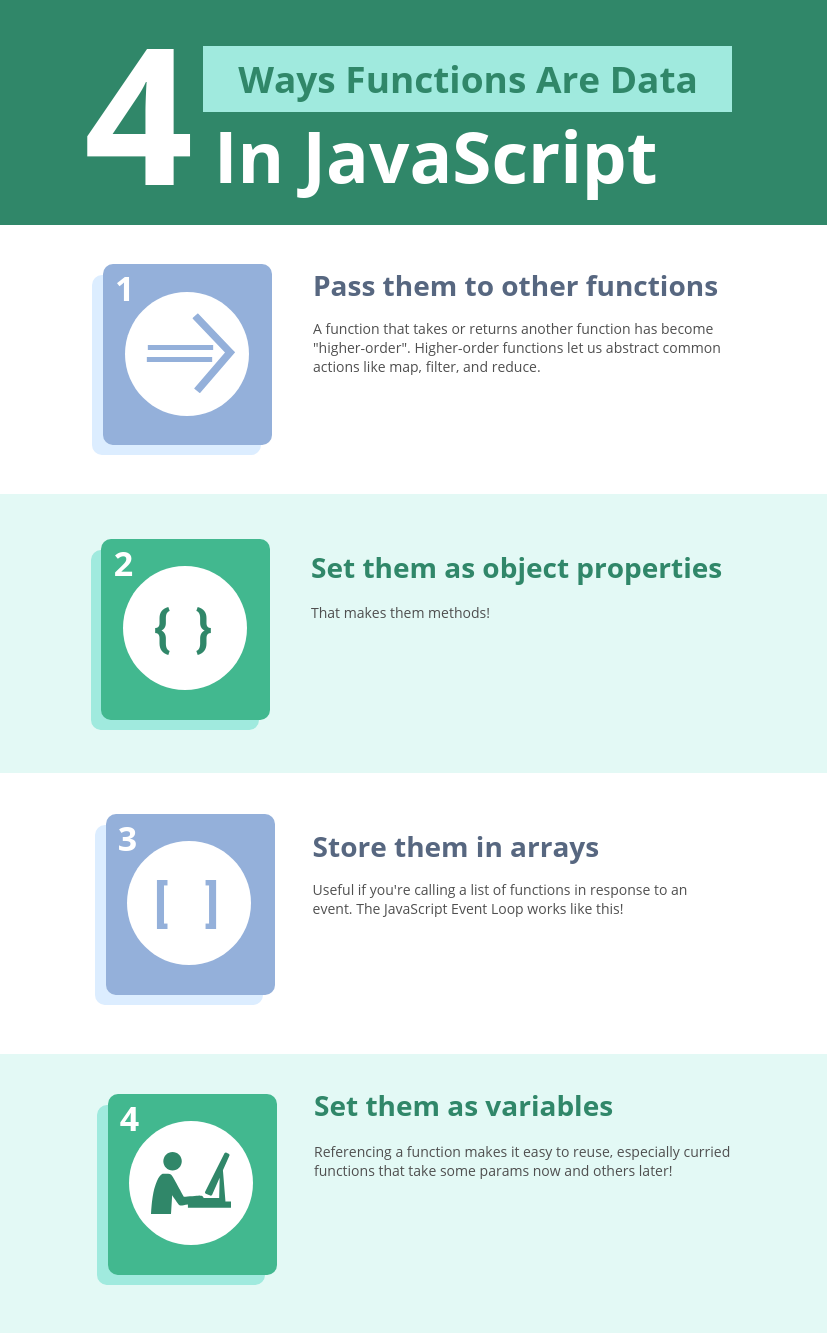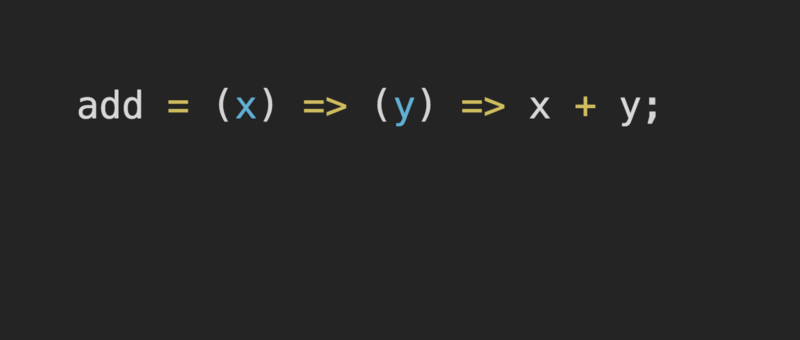By Yazeed Bzadough
Higher-Order Functions
A function that accepts and/or returns another function is called a higher-order function.
It’s higher-order because instead of strings, numbers, or booleans, it goes higher to operate on functions. Pretty meta.
With functions in JavaScript, you can
- Store them as variables
- Use them in arrays
- Assign them as object properties (methods)
- Pass them as arguments
- Return them from other functions
Like any other piece of data. That’s the key here.
Functions Operate on Data
Strings Are Data
sayHi = (name) => `Hi, ${name}!`;
result = sayHi('User');
console.log(result); // 'Hi, User!'
Numbers Are Data
double = (x) => x * 2;
result = double(4);
console.log(result); // 8
Booleans Are Data
getClearance = (allowed) => (allowed ? 'Access granted' : 'Access denied');
result1 = getClearance(true);
result2 = getClearance(false);
console.log(result1); // 'Access granted'
console.log(result2); // 'Access denied'
Objects Are Data
getFirstName = (obj) => obj.firstName;
result = getFirstName({
firstName: 'Yazeed'
});
console.log(result); // 'Yazeed'
Arrays Are Data
len = (array) => array.length;
result = len([1, 2, 3]);
console.log(result); // 3
These 5 types are first-class citizens in every mainstream language.
What makes them first-class? You can pass them around, store them in variables and arrays, use them as inputs for calculations. You can use them like any piece of data.
Functions Can Be Data Too

Functions as Arguments
isEven = (num) => num % 2 === 0;
result = [1, 2, 3, 4].filter(isEven);
console.log(result); // [2, 4]
See how filter uses isEven to decide what numbers to keep? isEven, a function, was a parameter to another function.
It’s called by filter for each number, and uses the returned value true or false to determine if a number should be kept or discarded.
Returning Functions
add = (x) => (y) => x + y;
add requires two parameters, but not all at once. It’s a function asking for just x, that returns a function asking for just y.
Again, this is only possible because JavaScript allows functions to be a return value — just like strings, numbers, booleans, etc.
You can still supply x and y immediately, if you wish, with a double invocation
result = add(10)(20);
console.log(result); // 30
Or x now and y later:
add10 = add(10);
result = add10(20);
console.log(result); // 30
Let’s rewind that last example. add10 is the result of calling add with one parameter. Try logging it in the console.

add10 is a function that takes a y and returns x + y. After you supply y, it hurries to calculate and return your end result.

Greater Reusability
Probably the greatest benefit of HOFs is greater reusability. Without them, JavaScript’s premiere Array methods — map, filter, and reduce — wouldn’t exist!
Here’s a list of users. We’re going to do some calculations with their information.
users = [
{
name: 'Yazeed',
age: 25
},
{
name: 'Sam',
age: 30
},
{
name: 'Bill',
age: 20
}
];
Map
Without higher-order functions, we’d always need loops to mimic map's functionality.
getName = (user) => user.name;
usernames = [];
for (let i = 0; i < users.length; i++) {
const name = getName(users[i]);
usernames.push(name);
}
console.log(usernames);
// ["Yazeed", "Sam", "Bill"]
Or we could do this!
usernames = users.map(getName);
console.log(usernames);
// ["Yazeed", "Sam", "Bill"]
Filter
In a HOF-less world, we’d still need loops to recreate filter's functionality too.
startsWithB = (string) => string.toLowerCase().startsWith('b');
namesStartingWithB = [];
for (let i = 0; i < users.length; i++) {
if (startsWithB(users[i].name)) {
namesStartingWithB.push(users[i]);
}
}
console.log(namesStartingWithB);
// [{ "name": "Bill", "age": 20 }]
Or we could do this!
namesStartingWithB = users.filter((user) => startsWithB(user.name));
console.log(namesStartingWithB);
// [{ "name": "Bill", "age": 20 }]
Reduce
Yup, reduce too… Can’t do much cool stuff without higher-order functions!! ?
total = 0;
for (let i = 0; i < users.length; i++) {
total += users[i].age;
}
console.log(total);
// 75
How’s this?
totalAge = users.reduce((total, user) => user.age + total, 0);
console.log(totalAge);
// 75
Summary
- Strings, numbers, bools, arrays, and objects can be stored as variables, arrays, and properties or methods.
- JavaScript treats functions the same way.
- This allows for functions that operate on other functions: higher-order functions.
- Map, filter, and reduce are prime examples — and make common patterns like transforming, searching, and summing lists much easier!
I’m on Twitter if you’d like to talk. Until next time!
Take care,
Yazeed Bzadough
yazeedb.com
